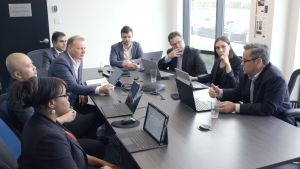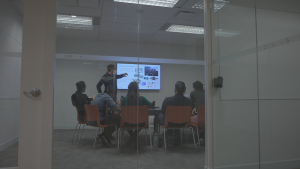
2016 Automotive News World Congress Reflections
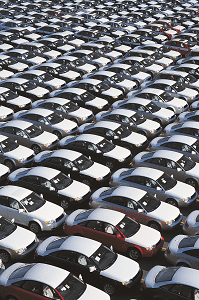 Last month I had the privilege of attending the Automotive News World Congress, with Microsoft continuing its sponsorship of this industry flagship event. Listening to each of the sessions was a great way to tune into the “state of the nation,” though reflecting on the collective messages perhaps raises more questions than answers. Coming right on the back of CES and all the announcements made there, it was no surprise that common topics included autonomous cars and the sharing economy, but let’s start with the headline numbers.
Last month I had the privilege of attending the Automotive News World Congress, with Microsoft continuing its sponsorship of this industry flagship event. Listening to each of the sessions was a great way to tune into the “state of the nation,” though reflecting on the collective messages perhaps raises more questions than answers. Coming right on the back of CES and all the announcements made there, it was no surprise that common topics included autonomous cars and the sharing economy, but let’s start with the headline numbers.
With 2015 setting new highs, where is the industry heading in 2016? Mike Jackson, CEO of AutoNation, the largest dealership group in the U.S., opened up this topic with some key data points. At the retail end of the supply chain, the last three months of 2015 delivered flat numbers in what are usually strong months. Inventories are up 25 percent on a year ago. Incentives are growing as a mechanism (THE mechanism?) to shift product. The data suggests that at best, sales have topped out. A plateau.
This became a drill-down question for other speakers throughout the Congress; how did they see it? The overriding consensus was that 2016 would show “modest growth,” though a plateau of 17.5 million units would not be too bad, given the depths the industry had sunk to in 2008-9. The second question posed by Mike Jackson was this: how should we manage the business when the industry is on a plateau, but when each brand is seeking growth? Traditional motivation mechanisms include stairstep programs to motivate dealerships, but with no overall growth, this could lead to an incentive war as growth at the brand level becomes a battle of conquests at the dealership.
My analysis of the industry data shows incentives have remained pretty constant, even in this year of setting records. The industry has trained its customer base to expect discounts and that’s going to be a hard lesson to unlearn. While 2016 is top of mind on the sales side, the message from the product side is all about autonomous cars, or at least about the path to autonomous driving. This topic was covered from many sides – the National Highway Traffic Safety Administration (NHTSA), OEMs, suppliers, dealers and of course, Google.
Let’s start with NHTSA, where Dr. Mark Rosekind reiterated the need for the industry to develop a “proactive safety culture.” Again, the numbers say it all – with 90% of accidents a result of human actions, shifting to a world of autonomous driving is all about safety. NHTSA has work to do, especially in setting out the framework for deployment, and equally important, for a common framework across all U.S. states (and worldwide if possible) – but the industry has to change too. One example he gave is that safety features should not be additional cost options. And the following day, U.S. Transportation Secretary Anthony Foxx unveiled plans for a 10-year, $4 billion investment in real-world vehicle automation pilots.
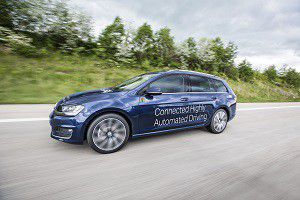 Timing for autonomous vehicles was high on the agenda, and the consensus was for autonomous features to be broadly available by 2020. Note, the overriding message was around features, not vehicles, and the continued deployment of advanced driver assistance systems (ADAS) that will enable drivers to release control of the vehicle to the systems in specific situations. The safety value of such systems is clear, as they never switch off. And how important is this? John Krafcik, CEO of Google’s Self-Driving Car Project, summed it up in this way: as systems get better, people pay less attention.
Timing for autonomous vehicles was high on the agenda, and the consensus was for autonomous features to be broadly available by 2020. Note, the overriding message was around features, not vehicles, and the continued deployment of advanced driver assistance systems (ADAS) that will enable drivers to release control of the vehicle to the systems in specific situations. The safety value of such systems is clear, as they never switch off. And how important is this? John Krafcik, CEO of Google’s Self-Driving Car Project, summed it up in this way: as systems get better, people pay less attention.
Ten years of pilots suggest that fully autonomous ecosystems are still some way off. Again, this was a question put to many of the speakers, and some of their forecasts went out as far as 2050. Donald Walker of Magna International saw faster progress: the automotive industry is now a technology industry, and the rate of technology development continues to accelerate. There were a number of concept demos of such technology at CES, and mass deployment by 2030 is much more likely.
Finally, there were discussions on car sharing, sparked by GM’s investment in the ride-share company Lyft. GM Chairman Dan Ammann talked the audience through the dis-economics of car ownership in urban environments, and the need for GM to be part of this emerging transportation ecosystem, where the initial trialing of autonomous vehicles is likely to happen. Did everyone agree? Absolutely not. Not even on the point of this being an emerging ecosystem. Mike Jackson’s take was that this was a hugely disruptive application of technology and those in the ride-share business – taxis, buses, commuter vans, and trains – should be very concerned.
But the numbers did not stack up for those travelling more than 5,000 miles a year, where ownership still made financial sense. What about peer-to-peer car sharing where people drive themselves? Nissan’s CEO Carlos Ghosn perhaps summed this up best: as the vehicle becomes connected and personalized, would you really lend it out to a stranger? Would you lend out your iPhone?
So where was the agreement?
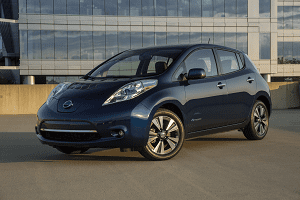 Vehicles will be increasingly connected, as evidenced by announcements such as Nissan’s adoption of Microsoft Azure as its cloud connectivity platform. ADAS technology will become ever more smarter, as evidenced by IAV’s CES showcase integrating V2I and V2P sensors in the car.
Vehicles will be increasingly connected, as evidenced by announcements such as Nissan’s adoption of Microsoft Azure as its cloud connectivity platform. ADAS technology will become ever more smarter, as evidenced by IAV’s CES showcase integrating V2I and V2P sensors in the car.
There will be more change in the next five years than in the past fifty. And there are three big questions for the industry as it heads out into the unknowns of 2016: managing in a plateau, the road to autonomous driving, and the impact on ownership of the “sharing economy.”
One thing does remain clear however: Automotive News will be there running the 2017 World Congress to help us understand the progress made in 2016 on all three.
LinkedIn: Chris Harries
Twitter: @chrisharauto


